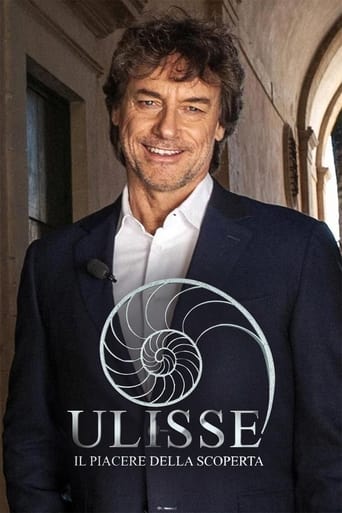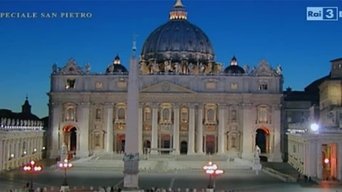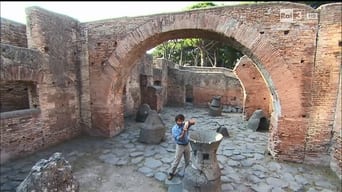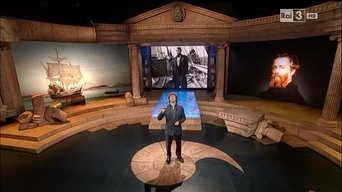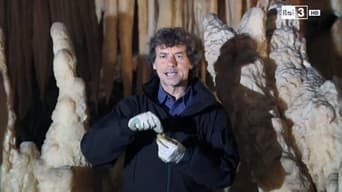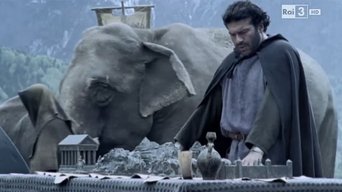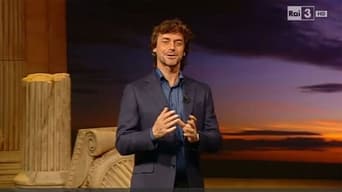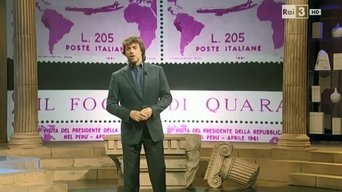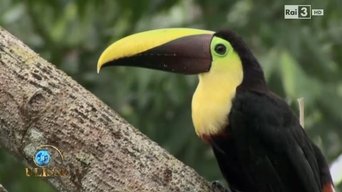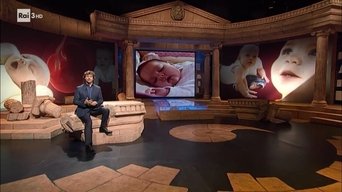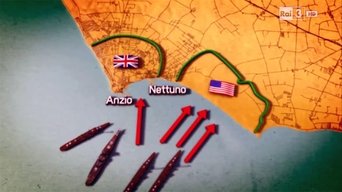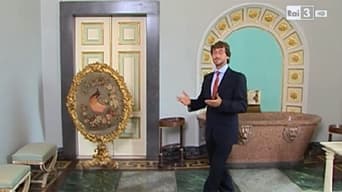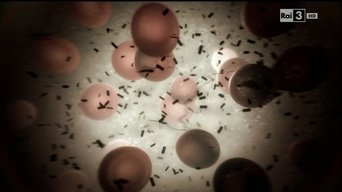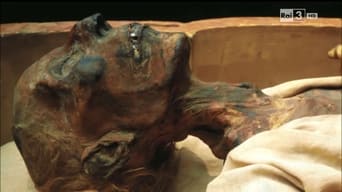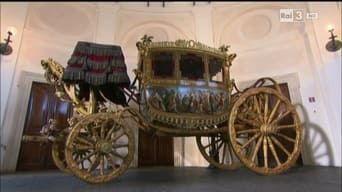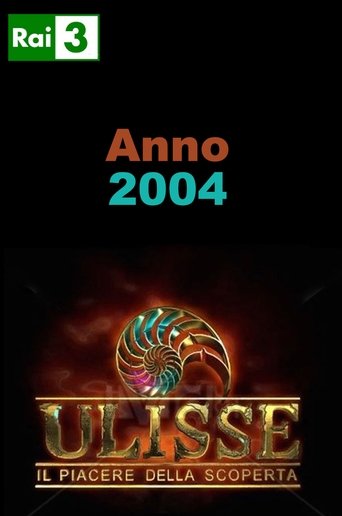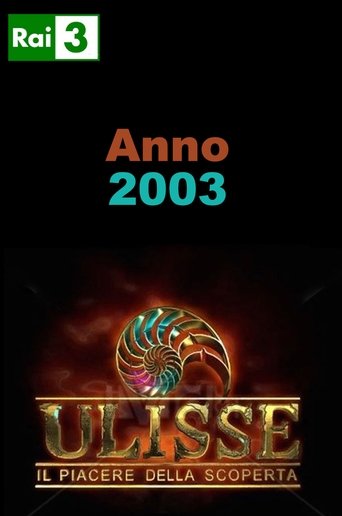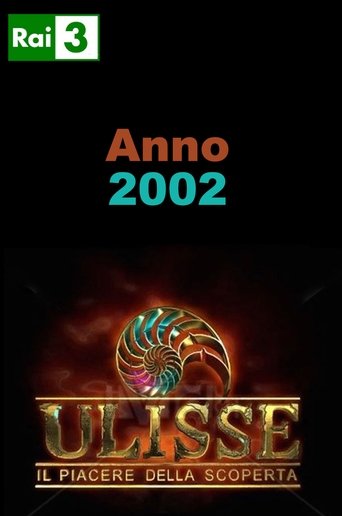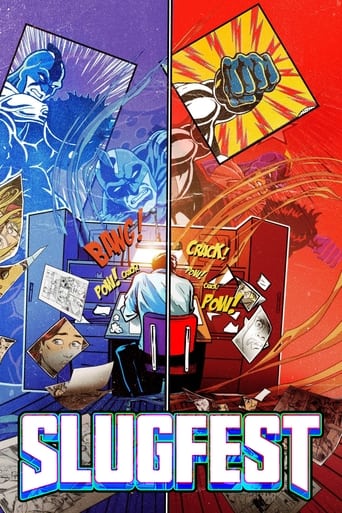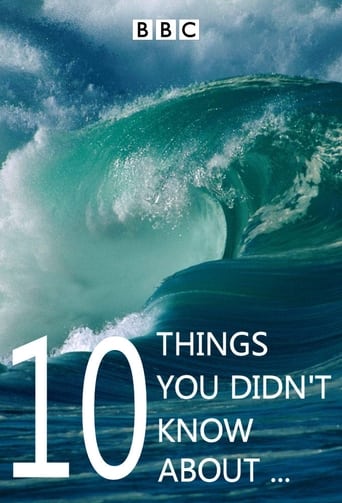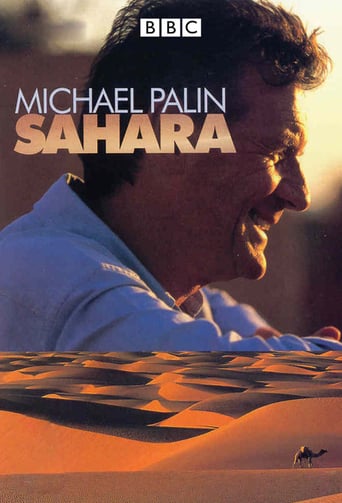Ulisse. Il piacere della scoperta Season 15
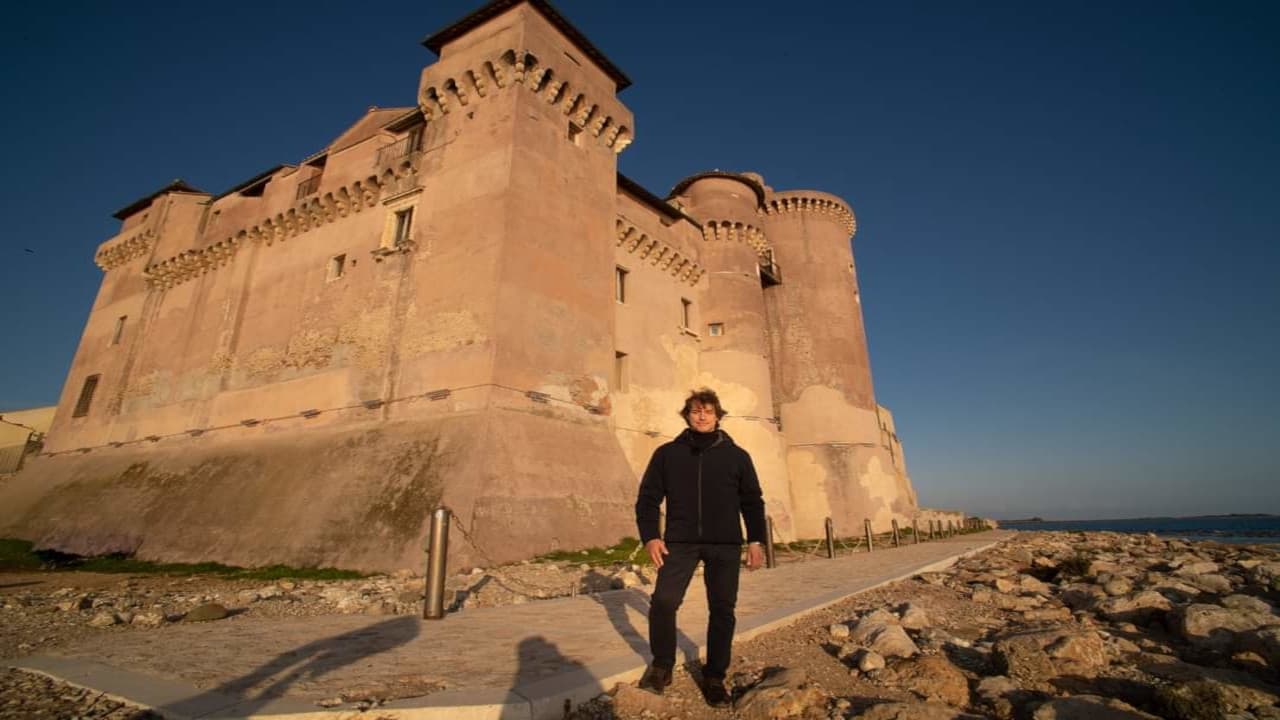
Alberto Angela leads the dissemination program dedicated to history, art and culture. A historical, archaeological, informative story, with the presence of some protagonists of the Italian cultural or artistic scene.
Watch NowWith 30 Day Free Trial!
Ulisse. Il piacere della scoperta
2001 / NR
Alberto Angela leads the dissemination program dedicated to history, art and culture. A historical, archaeological, informative story, with the presence of some protagonists of the Italian cultural or artistic scene.
Watch Trailer
Ulisse. Il piacere della scoperta Season 15 Full Episode Guide
"Ulisse: il piacere della scoperta" presents the story of St. Peter's Basilica, whose door is the first to be opened as a rite that will begin the Holy Year. Alberto Angela retraces the history of this great church going back in time to two thousand years ago, going down with the cameras to the place where it all originated: the tomb of Saint Peter.
A few steps from Rome is the largest archaeological site on the planet (150 hectares) yet little known to the general public: Ostia antica with its ancient port. Tourists who, upon arriving in Rome, give up visiting the remains of the ancient town do not know that in Ostia it is possible to see how society was organized and how daily life took place in the times of the empire.
A long journey back almost two centuries, a period in which the sea was still an unexplored world and was believed to be inhabited by extraordinary creatures and populated with myths and legends. Alberto Angela will accompany spectators to discover one of the masterpieces of world literature: Moby Dick. The novel written by Herman Melville in 1851 is one of the most famous and read books in the world. Little known, however, is the fact that, to write Moby Dick, Melville was inspired by a true story: the sinking of the US whaler Essex in the Pacific, due to the attack of an enormous sperm whale.
This episode of "Ulisse: il piacere della scoperta" guides us through the 5 most dramatic years in the history of the United States of America; the years of the Civil War, of the free North against the slave South. A conflict that will cause more deaths than all the others ever fought by the United States combined, including World Wars I and II.
In this episode, "Ulisse" takes us into the fascinating world of nature. Led by Alberto Angela, we make a curious exploration through two very distant but parallel worlds.
Alberto Angela is at the helm of this second episode once again dedicated to the splendors and history of Puglia. We start from Salento, and in particular from the city of Lecce: the host guides us through the buildings of the Baroque era, passing through streets, palaces and churches, arriving at the main square where the remains of a Roman amphitheater are preserved. Subsequently, the processing of papier-mâché is illustrated, inside an ancient laboratory: it is a characteristic art of the place, very useful for creating the statues of saints carried in processions. "Ulysses, The pleasure of discovery" then offers the opportunity to enter the basilica of Santa Caterina d'Alessandria, in Galatina, and to learn about the meaning of the taranta rite. He reaches the sea, to explore the caves of Zinzulusa and the waters of Gallipoli and Santa Maria di Leuca.
Ulysses' two-stage journey to Puglia begins from Castel del Monte - the pleasure of discovery during which Alberto Angela will travel the roads that lead from the Gargano to Salento to revive the splendors of this land rich in history, culture and art. Many beauties that the centuries and the people who have inhabited this territory have left as testimony. The first stage of this journey started from Castel del Monte, to then pass by the Museum of Ostuni and admire the sea of the Gargano and Tremiti, but also the caves of Castellana.
Alberto Angela will accompany us on a journey through time spanning over two thousand years, during which we will discover Carthage, the queen of the Mediterranean, with its large fleet, and Republican Rome, at the time still a young power on the rise which, thanks to the strength of its legions, it had recently managed to impose its hegemony over a large part of the Italian peninsula. Through graphic reconstructions and re-enactments, Alberto Angela will make us relive the most dramatic moments of the centuries-old war from the inside, taking us to some of the most representative places of this crucial conflict: from the shores of Lake Trasimeno, where Hannibal's army defeated the Roman legions led by the consul Flaminius, to the Sepulcher of the Scipioni, on the Via Appia Antica, one of the most evocative testimonies of the Rome of the Scipioni. But our journey will above all be an opportunity to retrace the life and deeds of Hannibal, one of the greatest leaders of antiquity.
The history of Man can be seen as a succession of conquests: we never think about the history of colors and yet it has changed our lives. "The conquest of colours" is a journey to discover how our world has been enriched with millions of shades over the centuries, thanks to the appearance of increasingly bright hues and colours. We will start from the Paleolithic, when humanity could essentially only have three colours: black, ocher and white. And we will continue to discover how the deep Egyptian blue, the first synthetic color in history, and the elegant purple of the Phoenicians and Romans were then added. We will see how the great glass masters learned to flood the cathedrals with colored lights, and how the greatest artists of the past obtained their colors using precious stones, such as lapis lazuli from which the blue used for example by Michelangelo in the Sistine Chapel was obtained.
Writing paper, reading paper, money paper, wrapping paper, wallpaper, kitchen paper, even construction paper and toilet paper. But also letters, diaries, coasters, birth certificates, board games, business cards, photographs and tea bags... An ancient material that we have always used and whose consumption shows no signs of decreasing, but which over the centuries has evolved to become almost 100% recyclable and reusable. A fiction will reconstruct the environment of the first medieval European paper mills, born here in Italy, in Fabriano, when the paper, which is of Chinese origin, after crossing the Arab world, arrives in the West. We will discover in the Tuscan industrial center of Capannori, near Lucca, that Italy is a world leader in paper production: a sort of economic lung from which a large part of the handkerchiefs (and not only) produced in the world come.
In the company of Alberto Angela we travel in the middle of the tropical jungle, the green ring straddling the Equator between the Tropic of Cancer and that of Capricorn. This is 8% of the emerged land of our planet and it is our lungs: the tropical forest is one of the environments richest in life on the planet. It has been calculated that on an area of a few square kilometers of forest in Central America, 125 species of mammals, 400 species of birds, 100 species of reptiles, 60 species of amphibians and almost 40,000 species of insects can be found. Among them there are legendary animals such as tarantulas, which can reach 12 cm in length, the anaconda which can reach 8 meters and the boa constrictor which reaches 2 and a half metres. Then there are felines such as the jaguar in America, the leopard and the tiger in Asia.
Alberto Angela takes us on an extraordinary journey to discover the thousand secrets of Naples, a city that reserves constant surprises. Between a ride in the most beautiful subway in the world or in the old but very efficient funiculars, and one in the extraordinary University Museums, Angela takes us to discover a city that reserves constant surprises. Then the Sansevero Chapel, with the extraordinary statue of the Veiled Christ, commissioned by the famous prince of Sansevero and again in the splendid halls of the Royal Palace to speak of the glorious past of the city. Naples, founded by the Greeks, then "welcomed" the Romans, the Byzantines, the Normans, the Swabians, the Angevins, the Aragonese, and the Bourbons and they all left beautiful traces of their passage both in the urban fabric but also more so in the language and traditions.
"Ulisse, il piacere della scoperta" brings to life an extraordinary adventure. An adventure that we have all gone through, but which we cannot remember in part, or which we have spent with such enthusiasm that we cannot understand its significance: we are talking about the adventure of growing up, from birth to that shocking period that is 'adolescence.
Alberto Angela guides viewers on a journey to Andalusia to discover a region shaped over the centuries by a succession of civilizations that have overlapped with each other and which, despite their differences, have managed to coexist peacefully. Moving from Seville to Cordoba, from Granada to Ronda, we see for example how Christian churches have become mosques and then churches again, remaining intact in their structures and indeed enriching themselves from an architectural and decorative point of view. Names, words, customs have remained unchanged despite the succession of different and apparently opposing cultures. An era of peaceful coexistence that seems to have no equal in today's world. These are the main places told by Alberto Angela: in Seville the Alcazar, the Cathedral, the Plaza de España and the Casa de Pilatos; in Cordoba the Mezquita; in Granada the Alhambra and the Royal Chapel.
Alberto Angela recounts what has been defined as "Italian Normandy"; the arrival of allied troops on the beaches of Anzio, near Rome. On January 22, 1944, when 40,000 men landed on the coast of Lazio, a few hours' drive from Rome, the German army was taken by surprise. The road to Rome seems open. But the man in command of the army, General John Porter Lucas, is instead convinced that he is facing a crushing defeat. The overall objective is the city of Rome, the main prize of the Italian Campaign. Would Rome become the first European capital liberated from Nazism? How long would it have taken to break the German Army's resistance? And what price would the population have paid?
Paris, its secrets and its wonders. The Bridges of Paris and the Seine have been declared a world heritage site by UNESCO. Alberto Angela, aboard a vintage boat, travels along the Seine, using the river as a journey through time. He explores Paris in various stages: from the top of the Arc de Triomphe, to the Eiffel Tower, to the towers of the spectacular Nôtre Dame Cathedral. The appointment with the Eiffel Tower is unmissable, as told by Alberto Angela in all its details, and the surprising transformations of Paris at the end of the nineteenth century: from the birth of the department stores to the many attractions of Montmartre, to the cafés of the Latin Quarter. And then the changes that occurred in the twentieth century: from Beaubourg to Défense.
The Kingdom of the Two Sicilies, a chapter in the history of pre-unification Italy in many ways surprising and little known. In fact, among all the Italian Kingdoms, that of the Two Sicilies was by far the largest, richest and most populated. Almost 10 million people, that is to say one in three inhabitants of our peninsula, lived under the aegis of the House of Bourbon. And Naples was the heart of this kingdom: it was one of the largest cities in Europe, second only to Paris, the fifth in the world, a destination for scholars and travelers of the time. In this episode we will discover why the Bourbon kings, as loved and respected sovereigns, were then fiercely fought by their people and why their kingdom, rich in economic records, technological achievements and cultural treasures, has gone down in history as a closed and retrograde world , responsible for the evils that still afflict our south.
In this episode Alberto Angela offers us a fascinating journey into the minds of animals. How many times, looking at your dog or your cat, have you asked yourself: who knows what he thinks, and what he would say if he could speak like us. Well, many researchers have asked themselves the same question, in particular neuroscientists and animal behavior specialists; and not only for dogs and cats but for many species. Today we know that the minds of animals are similar to ours in many respects, and behaviors that once seemed mysterious to us, or that we misinterpreted, finally have an explanation.
What pressures act behind the choice of a person to marry? What are the chances of keeping the promise of loyalty? Or to cheat? And what allows the union to last? Starting from a wedding reception, the episode of Ulisse will observe the particular relationship that is established between two people. And it will also explore the way in which sexuality is experienced at various ages, from childhood to older age, also following the small stories of the guests.
Invisible but very powerful, microorganisms have always been our life companions. Alberto Angela proposes a journey to discover infinitely small creatures, showing how our life, but sometimes also our death, depends on them. The journey of "Ulisse" begins in Benin, a very poor country which like many other places on the planet represents the "front line" of the fight against microbes and viruses. And international organizations operate here which have saved many children through vaccinations. But how and when did humanity begin to use vaccines? In "Ulysses", a documentary brings to life a "revolutionary" moment: the one in which Luis Pasteur tries the impossible to save the life of a child bitten by a dog suffering from rabies. An episode that will forever change not only the lives of the people involved but also our relationship with diseases. And, today, how can we protect ourselves from infections? What precautions to use? How effective are simple gestures like washing your hands?
Pharaoh Ramesses II, who lived 3200 years ago, is the greatest of the Egyptian pharaohs, considered a bit like the Sun King of the time, who like Louis XIV reigned for a very long period, over 67 years. The era of Ramesses is that of Egypt's greatest splendor. Throughout the Nile Valley his face is carved everywhere in stone. Among the many temples, colossal statues and obelisks that bear his name, the most grandiose work is the temple of Abu Simbel, the protagonist of an unprecedented operation in the 1960s: that of being sawn into many pieces and moved more high to prevent the waters of the Nile, following the construction of a dam, from submerging it. With Alberto Angela we will follow the events of this undertaking considered almost impossible at the time. We will also see Ramesses' tomb. Each pharaoh was concerned with building the home where he would live forever, surrounded by the objects dearest to him, gold, gems and furnishings.
In this episode of "Ulisse" we will talk about what the Hill is at the center of the news today: the Quirinale: what is its history? Which kings lived there? How does the President of the Republic live? How many people work there? It will be a journey behind the scenes into the heart of our institutions and the history of the Palace.
Free Trial Channels
Seasons


